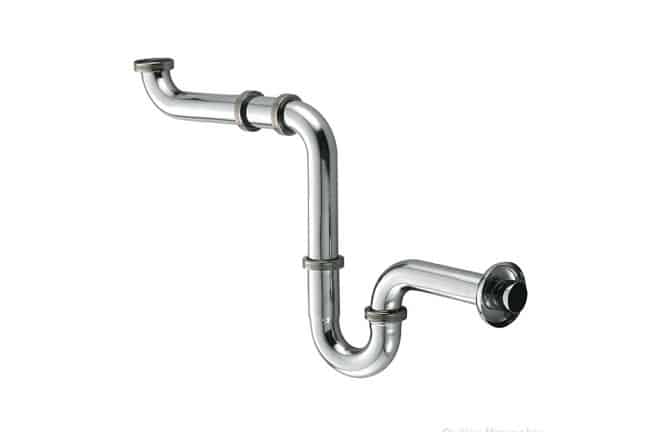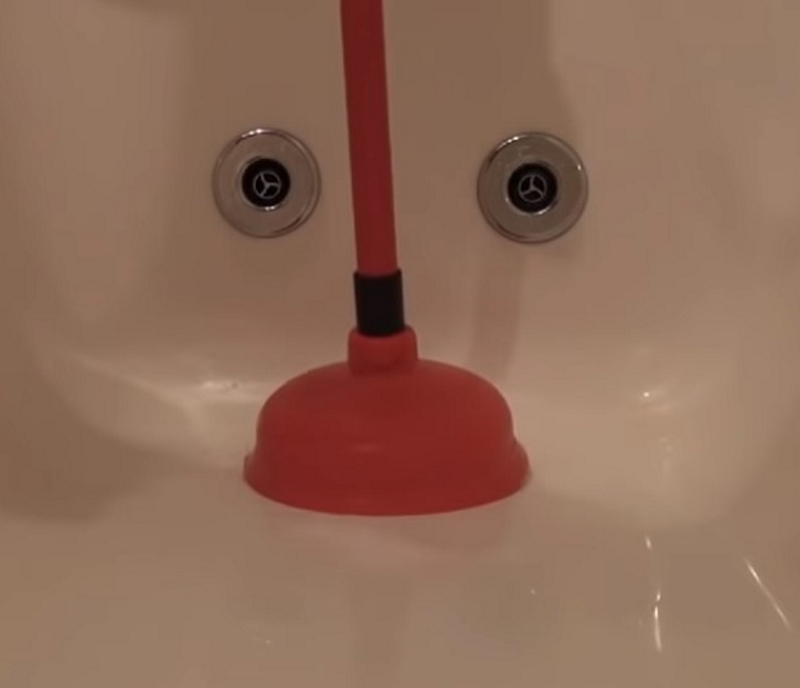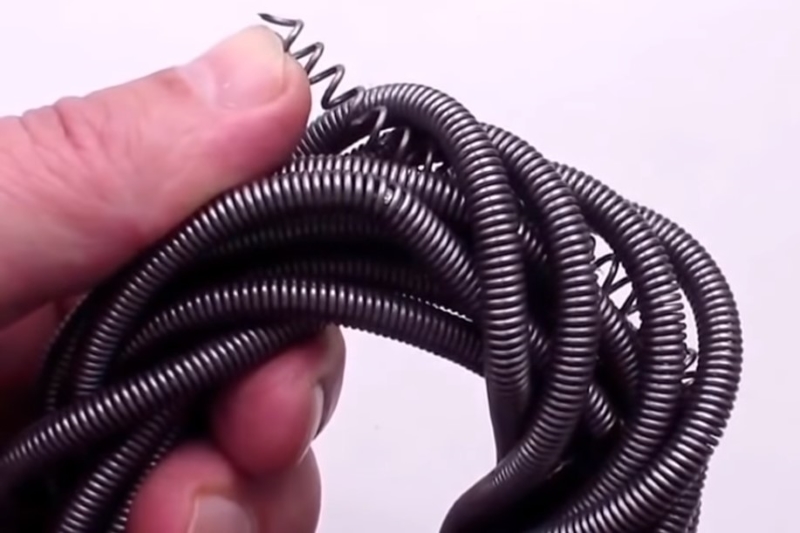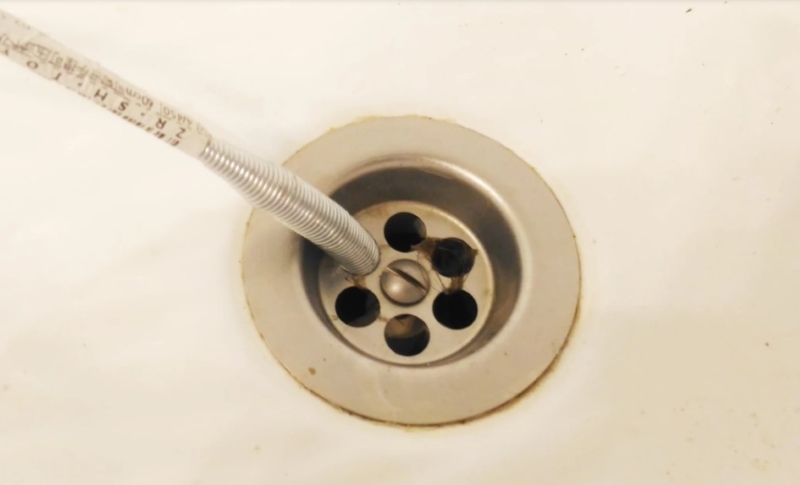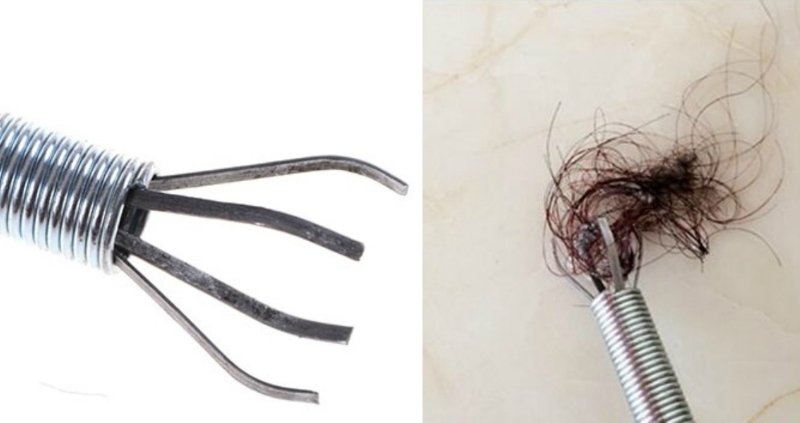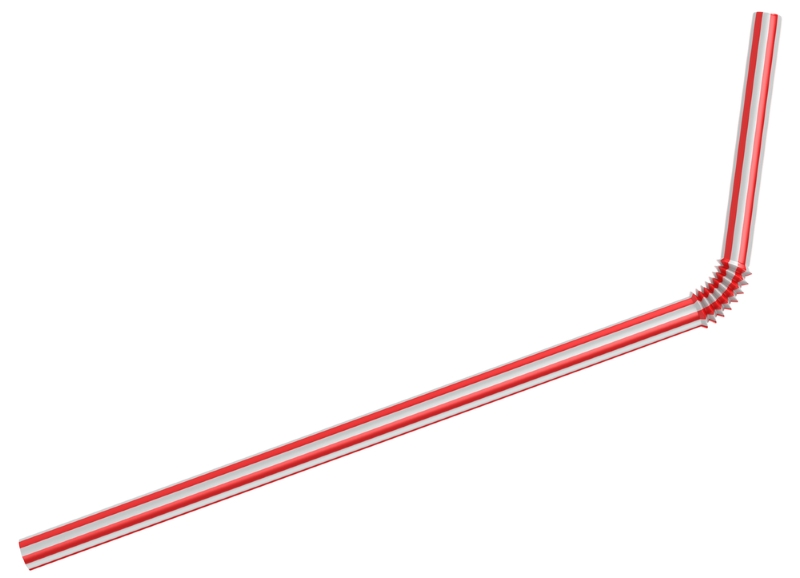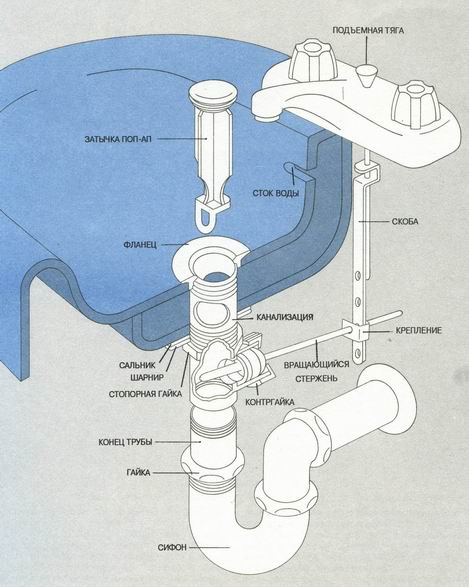Types of siphons by design
A siphon is an element designed to protect the home from the penetration of unpleasant odors from the sewer. This is ensured by the constant presence of water inside the device. Such a water seal also helps protect the pipe from getting into them large litter.
Siphons are classified by design, purpose and materials from which they are made. Structurally, the following types of these plumbing elements are distinguished:
- bottle type. The most common for connecting the sink to the sewer. They consist of inlet pipes and a siphon sump, which are made in the form of a bottle. This design is characterized by high throughput, ease of operation and cleaning. Among the shortcomings, it is necessary to highlight the large overall dimensions;
- Flat. Consist of alternately interconnected pipes of different diameters. In the lower part of the device, pipes form a kind of drop (elbow), in which a water lock is formed during the operation of the device. Such a system is efficient and reliable in operation, easy to clean and preventive maintenance. Most often installed in the bathroom;
- Corrugated. By design, they resemble flat ones, but they do not consist of several pipes, but of one flexible one. This type of design is known for its versatility, but its operation can bring some inconvenience. Due to the corrugated inner surface, litter and scale collect in the siphon, which contributes to its rapid disabling.
Siphons are used to connect toilets, bathtubs, kitchen sinks, showers and other consumers (washing machine or dishwasher) to the sewer. According to their purpose, they can be divided into single (used exclusively to connect one consumer) and branched. The latter is used to connect several drain pipes.
Corrosion-resistant materials are used for the manufacture of these elements. These are copper (brass), cast iron and plastic. Of course, there are also alloy steel options, but they are considered not durable enough.
Copper elements are presentable and can complement designer bathrooms. Their inner surface is absolutely smooth, which indicates the high efficiency of the siphon. But they are the most expensive;
Cast iron elements were popular in Soviet times. They are durable, resistant to aggressive external influences, and are not afraid of corrosion. The main disadvantage of such a device is the lack of flexibility - such siphons cannot be installed on non-standard connections;
Plastic are considered universal and durable. They do not rust, normally tolerate temperature changes and even shock loads.
But when choosing a plastic settling element, it is imperative to pay attention to the wall thickness and the smoothness of the inner surface. The main advantages are an affordable price and the ability to install on any plumbing fixtures.
Bath cleaning
It turns out that a person loses about a hundred hairs a day. And if the short male hairs do not pose a threat to the sewer, then the long female hair clogs the sewer quite quickly, forcing the siphon to be disassembled several times a month, eliminating blockages.
Disassembling the siphon is an unpleasant procedure when you are half-bent trying to get the contents, simultaneously waving away the dirty water flowing at you. Of course, you can still use household chemicals, but they can damage the plastic parts of the siphon itself.
In this case, only mechanical cleaning remains. For example, you can use a plunger to clear a blockage. To do this, pour water into the bath, while closing the hole.Then the cork is removed, and a plunger is put in its place, with which several energetic vertical movements are made. Dirt will rise up and be easily removed.
If there is a lot of hair in the blockage, then it will not work to cope with the plunger. Therefore, special cables with handles are much more suitable for cleaning. The cable is simply placed in the drain hole, and the handle is rotated.
The hair in the siphon is wound around the cable and then pulled out with it. The sight is unpleasant, but effective, since the rest of the blockage is easily washed down the drain with water.
However, when using a cable, there is a chance of damaging the pipe if it is made of chrome steel, brass or plastic. Therefore, in this case, it is better to use a special "claw", which we recommend using.
This device is inserted into the sewer siphon, then the spring on the handle should be pressed. "Claw" in this case is compressed. If a blockage has been captured, then when you try to pull it out, heaviness will be felt. You keep pulling and pulling out the blockage that was preventing the water from draining. Bathtub cleaning done.
Of course, such devices can not only be ordered in China, but also found in our markets. Worth a penny. In addition, it costs nothing for a real master to build such a mechanism from, for example, a cocktail tube: just cut it in a spiral with scissors, and you get a long spring, with which you can also remove clogs from your hair.
Recently, we have already told you why leave the brush under the toilet lid for 5-10 minutes. And also shared 10 amazing tips on how to clean up the house. Use our advice, and your home will delight you with impeccable cleanliness.
How do you deal with blockages in the bathroom? Share your experience.
Design
Before you wonder how to remove the siphon from the shower cabin, let's get acquainted with its features. This element is also called a "trap". Through this product, various plumbing fixtures are connected. It is not used for structures with a built-in water lock and those that are connected directly to the sewer system.
The following items are suitable for shower trays:
1. Bottle (flask). The functional element here is a special compartment with a bottle shape. Install such siphons for high shower trays.
2. Pipe. They are assembled from several pipes of different lengths, which are connected by adapters. They are characterized by compact dimensions, therefore they are in demand for almost all shower cabins.
3. Corrugated. These are also tubular devices, only soft pipes are used instead of hard ones, which are easily bent. They have a rough inner surface, which is why they clog faster, therefore they are less popular.
The best option for a shower cabin is a pipe siphon, which has suitable characteristics and small dimensions.


Drain design
How to choose the right siphon for a shower cabin?
Varieties and features of siphons
If for some reason the drain system does not cope with its functions, it is customary to replace the siphon. To dismantle the drain, you need to understand how to do it correctly. In some cases, it is enough to repair the drain or clear the blockage with a plumbing tool. The tub can leak due to clogs.
Sewer cleaners are able to eliminate the blockage, solve the problem with the unhindered passage of water. One of the symptoms that the cause of the leak is a blockage is the formation of an unpleasant odor from the sewer. If the use of this kind of means did not bring results, it was not possible to repair the drain, the only correct way would be to replace the siphon.
The first steps should be to go shopping for the right part. Modern industry produces many options and designs.To choose the right model, you need to know certain features.
According to the materials from which this sewer equipment is made, these devices are divided into plastic, metal models. Each of them has distinctive features.
Models made of plastic are distinguished by their low price, long service life, and are not afraid of exposure to chemical elements. However, minor irregularities in the manufacturing process can lead to leakage. In addition, such parts are quite fragile.
For the production of metal models, copper, brass, stainless steel are most often used. Such parts are distinguished by a high price, complexity during installation, they clog quickly, but have a spectacular appearance. These models are used to connect expensive bath models to the sewer.
Types of siphons according to the principle of operation
According to the principle of operation, manual, semi-automatic and automatic siphons are distinguished. Let's take a closer look at each type:
- Manual siphons are characterized by simplicity of design. They consist of a thin chain or flexible cable. A lid is attached to them, which serves as a constipation for the drain hole. When you need to drain the water, you just need to pull the chain, after which the lid will rise and release the drain. This system is very cheap and easy to use, but it can be somewhat inconvenient to use. In particular, not everyone likes to wet their hands in the process of uncorking the drain hole;
- Semi-automatic siphons consist of a more complex mechanism: a movable handle and a locking cap. The handle is connected to the lid with a flexible hidden cable. When you want to drain the water, just turn the handle, it will move the lid and the drain hole will open. When collecting water, you must also turn the handle and clog the drain. The principle of operation allows once again not to wet your hands in water. A siphon with such an overflow (water drainage) costs a little more than a manual one, but it is considered more convenient to use;
- The automatic siphon has no competitors in terms of comfort. There are two types of this design: click-clack and with a handle. Such systems consist of a special control mechanism, a cable, a locking element and a handle. The click-clack machine is a flat cover connected to a cable. When pressed, it changes its position. For example, if you press it twice, the shutter will open, if it is pressed once, the lid will close the drain hole. The device with a handle completely repeats the design of a semi-automatic device, but is equipped with an additional protection system.
The main advantage of the automatic siphon is its “smart” principle of operation. Automation can be configured in such a way that when the pressure in the bathroom reaches a certain level, the drain hole opens and excess water flows into the sewer. This protects against flooding and problems with the horizontal overflow (which often cannot handle large amounts of water due to its diameter). For example, click-clack siphons are also capable of “self-closing” after the pressure reaches an acceptable level.
Types of siphons and their features
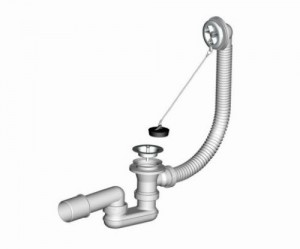
- Place of installation;
- The amount of water that the siphon must pass.
Bath siphons
Siphons designed for installation under the bathroom consist of two pipes - drain and overflow. Before the knee of the siphon, in which the water seal is located, both pipes are connected into one. Most models of bathtub siphons allow adjustment, since the drain and overflow holes on bathtubs of different models can be at different distances.
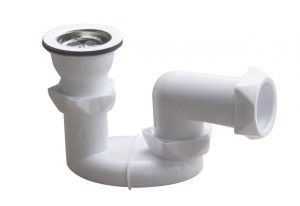
Siphons for installation under the bath are made of polymeric materials or metal, most often copper alloys. The latter are certainly more expensive, but if you plan to purchase an automatic drain, then it is better to take a metal piping, since plastic ones are unreliable and often break. When purchasing a conventional overflow drain for a bath, you can safely take a plastic model, it will serve for a long time.
Shower siphon
The siphon, which is installed under the shower tray, must have sufficient capacity. Such siphons are often called ladders. There are drains that are mounted directly into the floor, in which case the installation of a pallet is not required.
Siphons for washbasins
Sink siphons are available in different versions.
- Pipe models. This is a siphon in the form of a rigid curved pipe. In some models, for ease of cleaning, a plug is installed in the lowest section of the siphon.
- Corrugated models are convenient in that they allow adjustment in length, which greatly facilitates installation. However, such a siphon clogs with debris faster than others, since the inside of the tube is not smooth.
- Bottle models of siphons have a fairly rigid design. The body of the siphon itself is shaped like a bottle and has an unscrewed bottom, which makes it easy to clean.
- Siphon in a box. This type of siphon is used when you need to free up space under the sink. The siphon itself is installed in a hole made in the wall, and is connected to a drain hole with a thin tube.
Siphons for household appliances (dishwasher or washing machine)
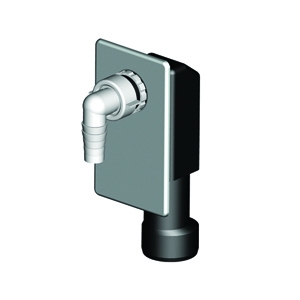
Sometimes household appliances are attached to the washbasin siphon. In this case, a model with a large capacity is selected, and an additional pipe for connecting a drain hose.
Siphons for kitchen sinks
As a rule, bottle-type siphons are installed on the sink, as they are the most practical and easy to clean. The fact is that kitchen drains may contain fat, which quickly clogs the siphons, reducing their throughput.
Today, sinks with two or three compartments are often installed in the kitchen. Naturally, it would be unprofitable to mount a separate siphon for each drain, so special double (or triple) siphons are used, which have a common body and several outlet pipes. When installing household appliances in the kitchen that need to be connected to the sewer, it is necessary to purchase siphons with additional outlets.
Replacement
Let's move on to how to change the siphon under the shower. It is not recommended to buy cheap products, since in order to replace a failed siphon, you will have to remove the pan. And for this, of course, not in all cases, you have to dismantle the shower cabin. Not all parts can then be reused, so you should immediately choose a reliable product that will not require frequent maintenance.
No matter how reliable the equipment is, it cannot last forever. To replace the siphon, the decorative panel is first removed from the bottom of the tray. It is often fastened with snap-on clips. To open them, you should press the panel around the periphery with a little effort.
Dismantling is carried out as follows:
1. An elbow is detached from the external sewer pipe.
2. The knee is unscrewed from the pallet, for which an adjustable wrench or washer is suitable.
3. The overflow is disconnected, if any.
4. The drain is removed.

Dismantling the element
The next step is how to disassemble the shower siphon for cleaning.
The sequence of work looks like this:
1. We substitute a container under the siphon, where the remaining dirty water will drain.
2. Unscrew the union nut. It is better to do this slowly so that the liquid does not get on the floor.
3. Pour out the remaining water.
4. Remove the gasket from the rubber.


Appearance of the disassembled device
Read also! You may also be interested in how to replace the cartridge in the shower faucet
The procedure is not difficult and everyone can cope with it. At the same stage, if the same element is installed back, it is useful to know how to clean the shower siphon, removing all contaminants.
The water in the shower tray often stagnates due to clogging, so it needs to be properly looked after. After dismantling, we use a regular brush and clean it. Preventive cleaning should be carried out every six months. It is forbidden to clean by blowing with compressed air under pressure, as this may break the siphon connections, which will lead to depressurization. After completing the work, you can check the performance of the product under a stream of water. If everything is fine and there are no leaks, it is installed in place.
It happens that even after cleaning the “ladder”, an unpleasant smell remains. Probably clogged pipes. They should also be free of contaminants. Let's figure out how this is done using the example of plastic products:
1. Mechanical. A plunger or plumbing cable is used.
2. With cleaning products. It is not recommended to use aggressive substances to clean the drain and pipes. Their content can adversely affect the condition of the plastic. It is better to prefer helium funds.
3. Folk methods. A mixture of soda, vinegar and salt is made.

During operation, a lot of dirt accumulates inside the pipes.
It is more difficult to clean drains connected through a corrugation. Here it is better to immediately disconnect the siphon and put it in order.
If the element leaks as a result of a crack in the housing, then it will have to be replaced with a new one. To buy a suitable product, you need to build on:
• design and diameter of the mounting hole (5.2/6.2/9 cm);
• pallet depth;
• presence of overflow;
• type of plug;
• height of the mounting opening.
Each person at least once encountered siphons and imagines how they work. When the plug is closed, water will begin to be drawn into the pan, open - to merge. Such outdated models are gradually being replaced by fully automatic products with handles. Recently, these views have been supplemented with a useful feature called “click-clack”. It is a mechanism located in the drain itself, equipped with a special plug. To open or close the hole, just press the plug with your foot. A single press closes it, a double press opens it. Thanks to this feature, you do not have to bend down every time if you want to draw water into the pan. In addition, it is safe if the plumbing does not have a special anti-slip coating.
Siphon device
To understand how to clean a siphon, you first need to understand its design. Different models of siphons may differ from each other in the shape of the pipes, the elements for connecting to the sewer system and the method of sealing the joints, however, the main structural elements of all products are the same:
Siphon installation diagram.
- Drain neck. It is installed in the drain hole of a bathtub or sink and consists of a nozzle with an extension and a top designed in the form of a cup. These elements are interconnected with a screw. For reliable tightness of this connection, a special sealing gasket is used.
- Overflow neck. It has the same design as the drain.The only difference is the water outlet, which is not straight, but lateral.
- Siphon. Usually it is made in the form of a removable curved pipe, in which water is always present. This allows you to keep an unpleasant odor inside the sewer and not let it into the room. The volume of the water seal is of great importance. Cheaper models of siphons for sinks and bathtubs have a small volume, as a result of which stench can break out through the water trap. Therefore, it is recommended to buy products with a volume of at least 400 ml.
- Connecting corrugation. Designed to drain water from the overflow neck into the siphon. Due to the fact that the working pressure in this area is small, in most cases the corrugation is simply put on special pipes without the use of sealing agents and additional fasteners.
- The branch pipe for connecting the siphon to the sewer inlet can have a flexible or rigid design. The first is easier to connect, and the second is more reliable.
